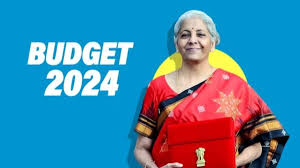The Hindu : Page 02
Syllabus : GS 3 : Indian Economy

Finance Minister Nirmala Sitharaman revised the income tax slabs and increased standard deductions under the new tax regime to provide relief to middle-class taxpayers and promote higher disposable income.
- Key changes include raising the ₹3-6 lakh slab to ₹3-7 lakh and increasing deductions for salaried employees and pensioners.
- The tax slab of ₹3-6 lakh has been revised to ₹3-7 lakh, with the 5% tax rate unchanged.
- No changes were made for incomes below ₹3 lakh, the ₹12-15 lakh slab, or incomes exceeding ₹15 lakh.
- The changes are expected to save a salaried employee up to ₹17,500 in income taxes.
- The standard deduction for salaried employees under the new tax regime increased from ₹50,000 to ₹75,000.
- Deduction on family pension for pensioners increased from ₹15,000 to ₹25,000.
- These measures aim to provide relief to around 4 crore salaried individuals and pensioners.
- Deepashree Shetty from BDO India noted that the rejig in slabs is intended to relieve middle-class taxpayers and promote the new tax regime, which over two-thirds of taxpayers opted for last fiscal year.

- Poorva Prakash from Deloitte India stated that the revision in tax slabs and the increase in standard deductions benefit salaried employees, facilitating savings of about ₹17,500 on an income of ₹15 lakh, thus increasing disposable income.
- Ms. Prakash highlighted that taxpayers in the new tax regime cannot claim exemptions like house rent allowance (HRA), limiting incentivisation avenues, hence the revision in tax slabs and standard deduction.
- The FM proposed that not reporting movable assets up to ₹20 lakh would not incur penalties, addressing issues faced by Indian professionals with foreign assets like ESOPs and social security schemes.
UPSC Prelims PYQ : 2017
Ques : Consider the following statements:
1. Tax revenue as a percent of GDP of India has steadily increased in the last decade.
2. Fiscal deficit as a percent of GDP of India has steadily increased in the last decade.
Which of the statements given above is/are correct?
a) 1 only
b) 2 only
c) Both 1 and 2
d) Neither 1 nor 2
Ans : d)








